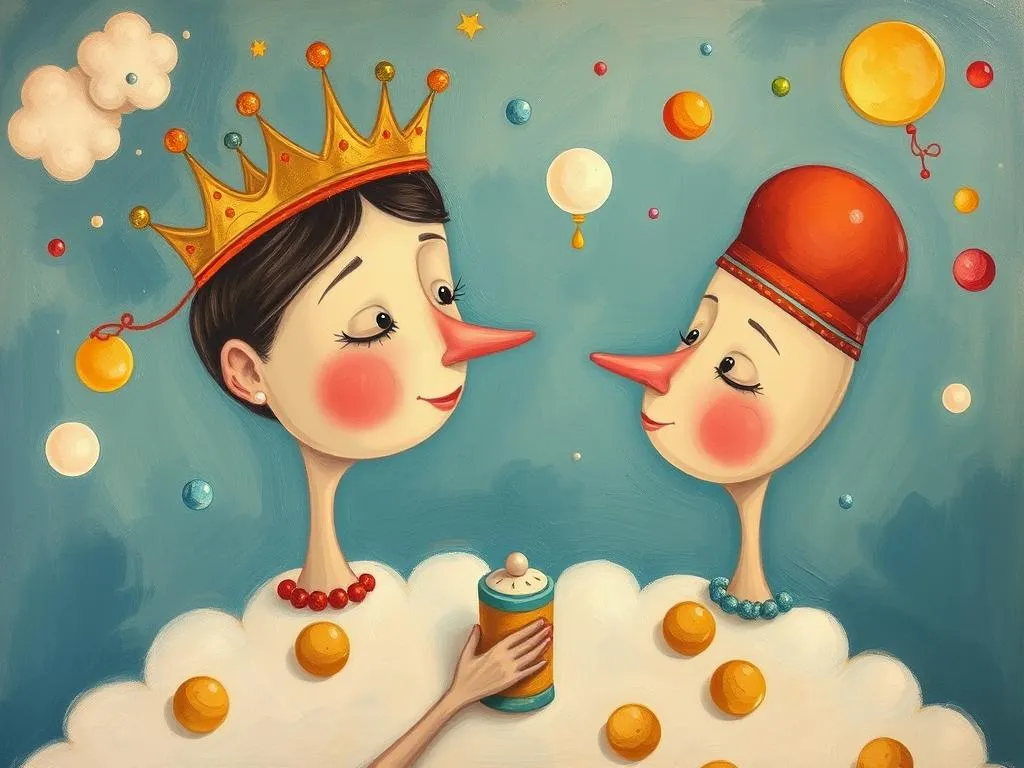
Dreams have long fascinated humanity, serving as a bridge between our waking life and the subconscious. From ancient civilizations to modern psychology, dreams have been a canvas for our innermost thoughts, fears, and desires. The intrigue lies not only in what we dream but also in how these dreams resonate with our lives. In this article, we will explore the rich tapestry of dream interpretations beyond Russian traditions, delving into symbolism, variations, and real-life applications that can enhance our understanding of these nightly narratives.
Symbolism and Meaning
Dreams are often laden with symbolism that reflects our inner world. Each element within a dream can hold distinct meanings, influenced by personal experiences and cultural contexts. For instance, dreaming of water can symbolize emotions and the subconscious. It might reflect a need for emotional cleansing or signify a turbulent emotional state. On the other hand, birds frequently represent freedom and perspective, suggesting a desire to rise above one’s current circumstances or gain insight into a situation.
Another common symbol is the house, which often represents the self. Different rooms might mirror various aspects of our personality or stages of life. For example, exploring a basement could indicate a journey into one’s hidden fears or unresolved issues, while ascending to an attic might symbolize climbing toward higher consciousness or reflecting on past experiences.
Dreams can also feature animals, each carrying its own unique meaning. For instance, a lion can embody strength and courage, while a snake might represent transformation or hidden fears. The interpretation of these symbols can shift dramatically based on their context within the dream. For example, a snake appearing in a dream might evoke fear if it is aggressive but could represent healing if it is passive or friendly.
Beyond these symbols, colors can also play a significant role in dream interpretation. The hue of an object or environment can evoke specific emotional responses. For instance, a dream set in vibrant red might signal passion or anger, while a calm blue might suggest tranquility and peace. Understanding the emotions tied to these colors can deepen the interpretation of the overall dream.
It’s essential to note that interpretations can vary widely, influenced by cultural backgrounds and personal beliefs. For instance, while in some cultures, dreaming of death signifies transformation and new beginnings, in others, it might evoke fear of loss or the unknown. Thus, engaging with dreams through the lens of personal and collective symbolism can yield richer insights.
Key Scenarios and Variations
Dreams come in countless forms and scenarios, each with its own implications. One common variation is the chase dream, where the dreamer finds themselves being pursued. This scenario often symbolizes avoidance. The object of the chase could represent an unresolved issue or emotion that the dreamer is reluctant to confront. The identity of the pursuer can also provide clues; for example, if it’s a familiar person, it might reflect interpersonal conflict, while a stranger could symbolize an unknown fear or anxiety.
Another prevalent scenario is the falling dream, which typically signifies feelings of loss of control or insecurity. The context of the fall can alter its meaning significantly. For instance, falling from a great height might indicate overwhelming stress, while a gentle fall might suggest a need to let go and trust the process.
Flying dreams present a contrasting experience, often tied to a sense of liberation or accomplishment. However, variations exist here as well. If the dreamer struggles to fly or is unable to gain altitude, it might reveal feelings of inadequacy or obstacles in waking life. Conversely, soaring effortlessly can symbolize confidence and freedom.
Exams or tests in dreams are another common theme, often reflecting feelings of self-evaluation or pressure to perform. The circumstances surrounding the exam can shift its interpretation; for example, an unprepared dreamer may represent anxiety about one’s abilities, while successfully passing the test could symbolize personal growth and achievement.
Exploring these scenarios illustrates how the nuances of a dream’s plot can significantly shift its interpretation. A simple twist in the narrative can lead to vastly different insights, emphasizing the importance of context in dream analysis.
Real-Life Connections and Takeaways
Understanding our dreams can provide profound insights into our daily lives and emotional states. Drawing connections between dreams and real-life experiences can foster a deeper understanding of our fears, desires, and motivations. Engaging in self-reflection is crucial; after waking, consider jotting down the details of your dream. What emotions did you experience? What symbols stood out to you? How do these elements resonate with your current life situation?
For example, if you dream of being chased, take a moment to ponder any areas in your life where you might feel overwhelmed or are avoiding confrontation. Are there unresolved issues or emotions that require your attention? This kind of introspection can lead to actionable steps, whether that means addressing a conflict, seeking support, or simply acknowledging your feelings.
Moreover, consider incorporating mindfulness practices into your daily routine. Techniques such as meditation and journaling can help you become more attuned to your emotions and thought patterns, making it easier to connect your dreams with your waking life. By fostering a deeper awareness of your inner world, you can better navigate the challenges and opportunities that arise.
Another practical takeaway is to keep a dream journal. Recording your dreams can reveal patterns over time, offering insights into recurring themes and symbols. This practice can increase your understanding of your subconscious mind and help you identify areas in your life that require attention or change.
As you reflect on your dreams, remember that interpretation is a highly personal journey. While generalized symbols and scenarios can offer guidance, your unique experiences and emotions should take precedence. Trust your instincts and allow your personal context to shape your understanding of your dreams.
In conclusion, exploring dreams beyond Russian traditions opens a rich avenue for personal growth and self-discovery. By delving into the symbolism, variations, and real-life connections of dreams, we can unlock deeper insights into our subconscious. Embrace the opportunity to reflect on your dreams, and allow them to illuminate your path toward greater self-awareness and fulfillment. Through this exploration, you may find that your dreams are not just fleeting images but valuable guides leading you to understand yourself more profoundly.







